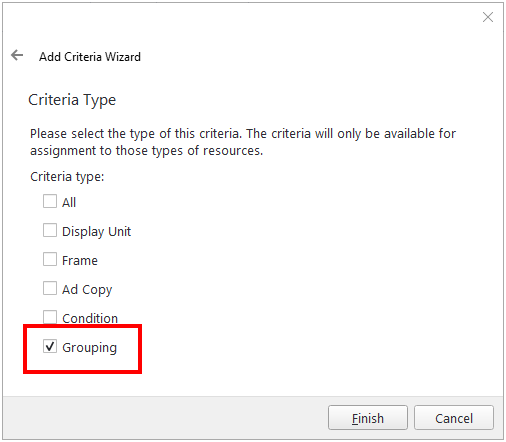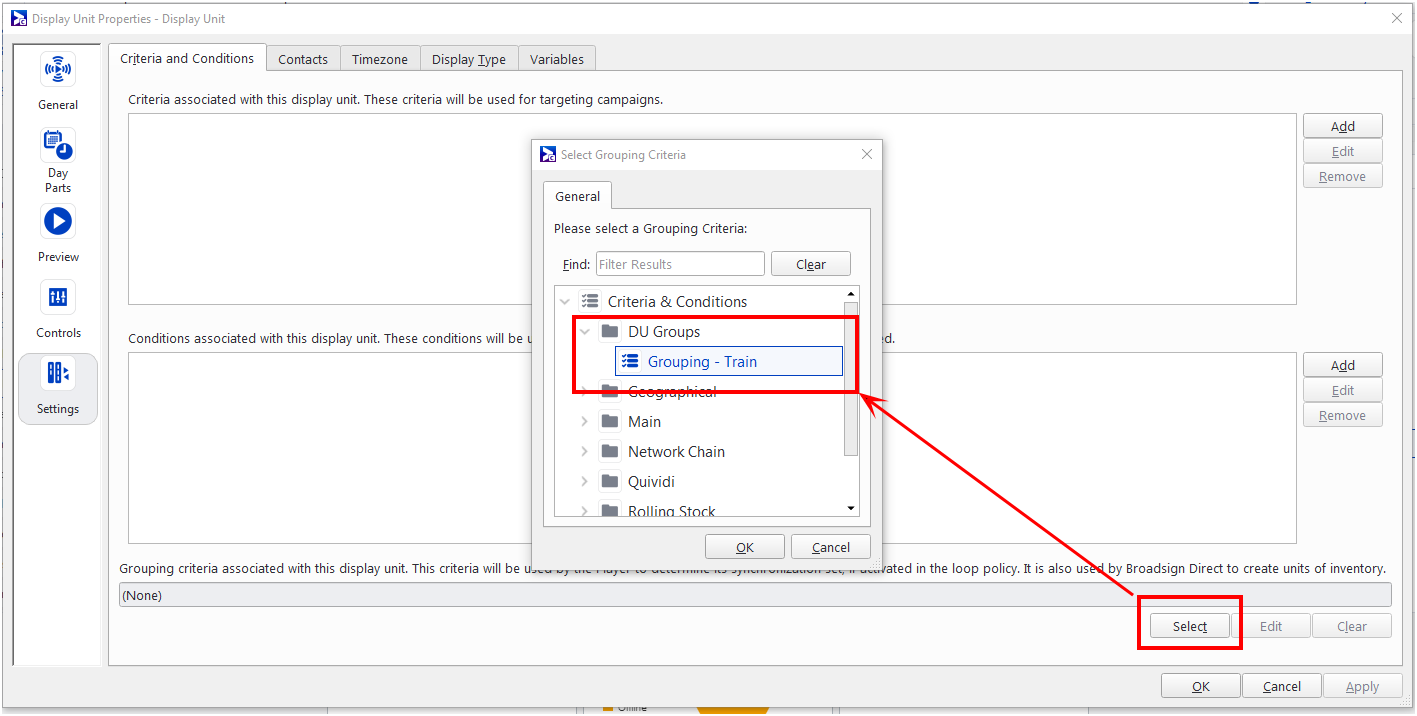This section describes how to set up and use synchronized players to play different content in sync on multiple players in Broadsign Air.
Note: Synchronized players is not compatible with use of multiple frames.
Synchronized Players
In some deployment scenarios, players are grouped together so that they appear to be playing “in-sync”, even though there is no network between them. This effect is achieved by synchronizing the player clocks.
Using synchronized players in Broadsign Air involves assigning the same Grouping criteria type, in, Broadsign Control Administrator, to the players that must be synchronized. Players with the same Grouping criteria type are part of a Display Unit Group.
The playlists for players participating in a Display Unit Group are generated differently than for regular non-synchronized players.
Using a Display Unit Group allows Broadsign Air to ensure that the playlist is properly aligned and synchronized with the other players in the same group by generating time-synchronized playlists for multiple display units to play in unison.
Notes:
- The synchronized players feature is not compatible with use of multiple frames.
- Synchronized players should use the same bundle targeting for all Display Units in the group.
- Scheduled Conditions are not applied to the Follower players.
- When a Follower player has Broadsign Publish and Broadsign Reach items, they will use the Leader's geometry.
To set up synchronized players:
- Create a criteria in Broadsign Control Administrator and assign it the Grouping type (see Add Criteria or Condition).
- Assign the same Grouping criteria type to all the display units that must be synchronized by editing display unit properties in the Criteria and Conditions tab of the Display Unit Properties window, Settings section (see The Settings Section).
Once your synchronized players have the same Grouping criteria type, you can generate a playlist by calling the generate API on one of the players (the requesting player) in your Display Unit Group, as described in Broadsign Air Quick Start.
The requesting player is the player identified in the generate request.
Tip: Keep in mind that the playlists for players participating in a Display Unit Group are generated differently than for regular non-synchronized players.
The following describes the behavior when a generate request for a player in a display unit group is made:
- Broadsign Air retrieves information about the display unit group to which the player belongs, including identification of other players in the group.
- Broadsign Air generates or extends playlists for the requesting player and the Leader player at the same time, ensuring that playlists for both are properly aligned and synchronized.
- The player in the group with the lowest ID is always elected as the Leader. Other players are designated as Followers.
- The Leader player has its playlist, the “Leader playlist”, generated the same way as for non-synchronized players. This includes sending bids for Broadsign Reach slots within the first few minutes of the playlist.
- The Follower players have their playlists derived from the “Leader playlist” instead of having their own generated from scratch. The ad copies contained in a given bundle (according to the display unit/frame criterias) are re-evaluated as per each Follower player, so they each play the correct content. Slots should always be the same between Follower and Leader.
- This playlist generation only occurs if the group’s playlists have been generated more than four minutes ago, if conditions in the request have been changed, or if the Leader has been removed from the group. If the Leader has been removed, the player with the lowest ID becomes the Leader).
- As per normal generate behavior, the first few minutes of the playlist since the last time it was generated will never be regenerated. This allows for enough time for synchronized players to each obtain a consistent synchronized playlist even if they are reaching Broadsign Air at slightly different times.
- Broadsign Air returns the response containing the playlist for the corresponding Leader or Follower player.
The following steps also occur:
This mechanism ensures proper time and slot alignment between the players. The Follower players reuse the same Broadsign Reach bid results as is (they are not re-evaluated).


